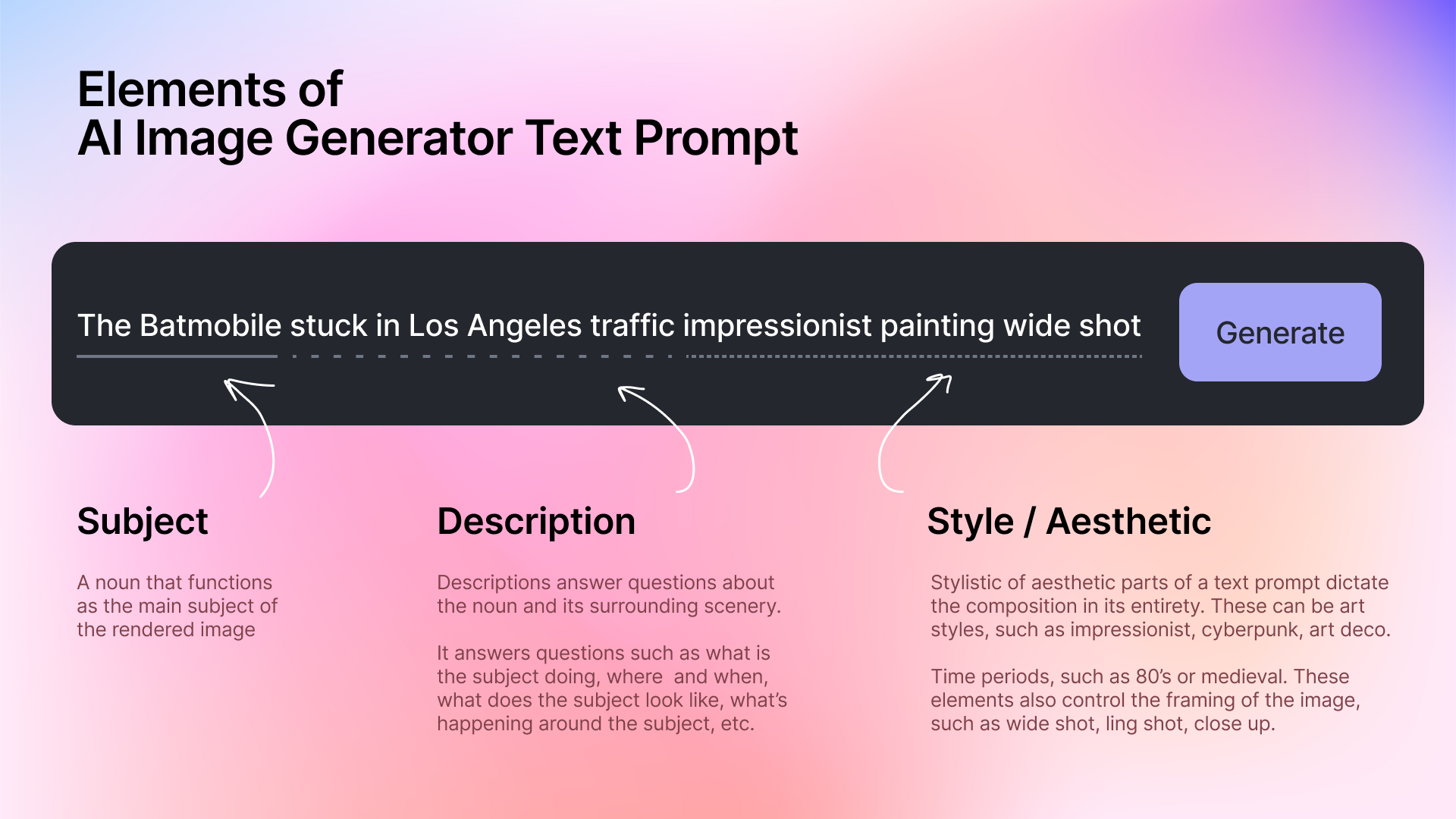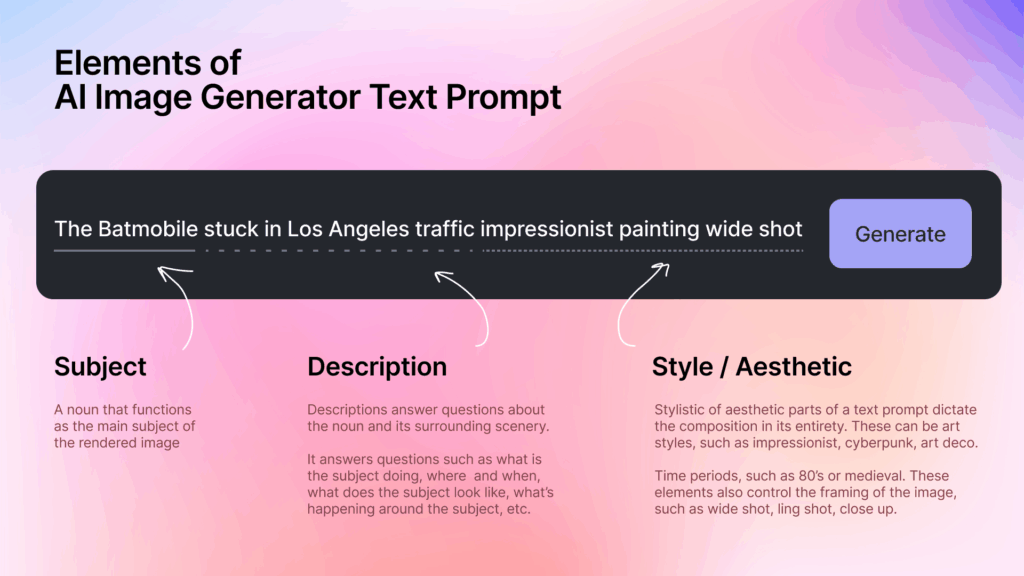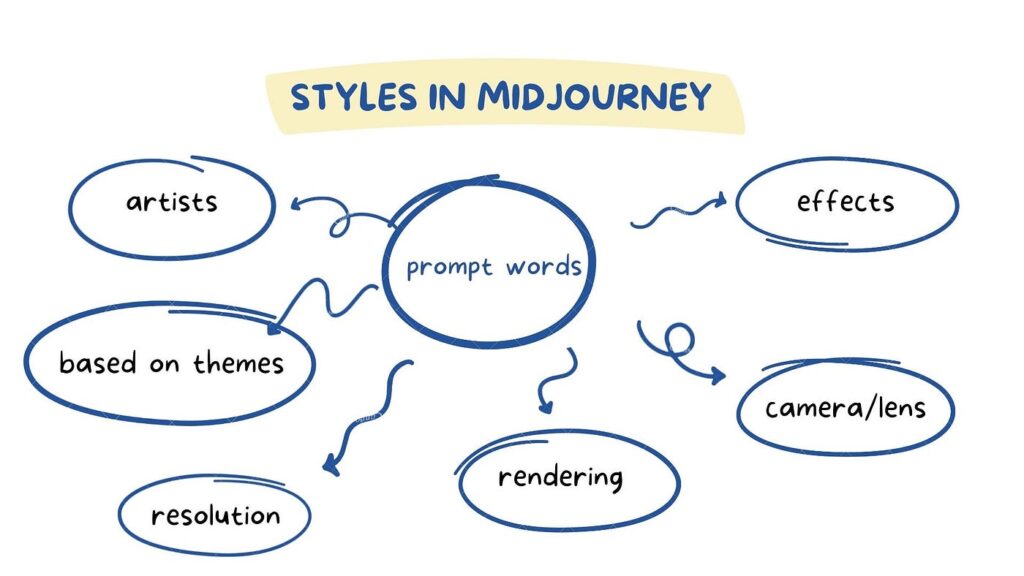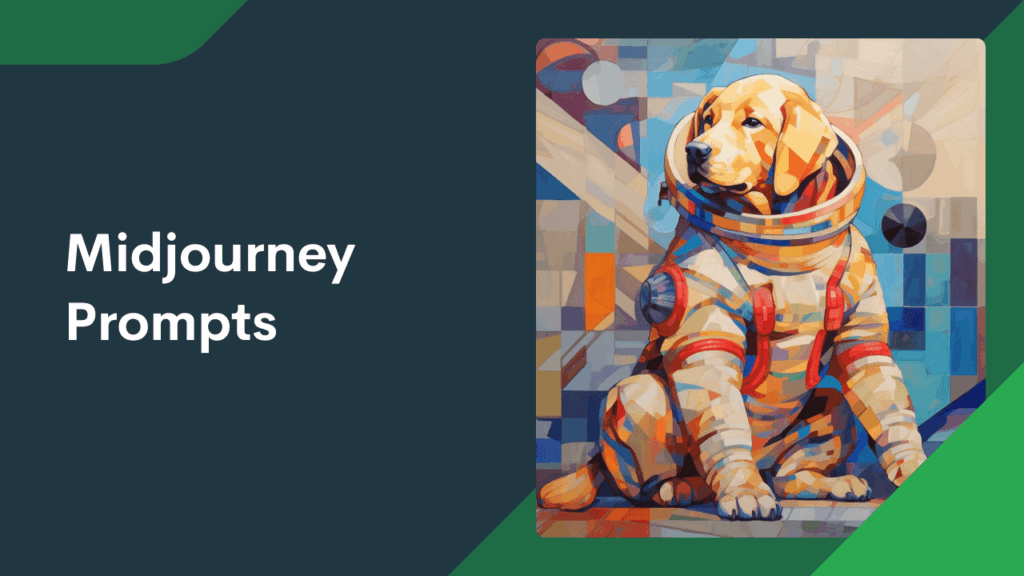Welcome to AskByteWise.com, where we transform complex tech into simple, actionable insights! Today, we’re diving headfirst into the fascinating world of AI-generated art, specifically focusing on The Art of Prompting: How to Write Effective Prompts for Midjourney. If you’ve ever dreamt of creating breathtaking images with just a few words, Midjourney is your canvas, and prompting is your brush. But just like a master painter needs to understand their tools, mastering Midjourney requires understanding how to communicate your vision clearly and effectively to the AI. This guide will walk you through everything you need to know, from the absolute basics to advanced techniques, ensuring your artistic ideas leap from your imagination onto the digital page.
What is The Art of Prompting: How to Write Effective Prompts for Midjourney and Why It Matters?
Imagine you’re commissioning a highly skilled artist, but this artist is an artificial intelligence. You can’t just say, “Draw something nice,” and expect a masterpiece. You need to give clear, detailed instructions. This is precisely The Art of Prompting: How to Write Effective Prompts for Midjourney. It’s the skill of crafting specific text commands – called “prompts” – that guide an AI image generator, like Midjourney, to produce the exact image you envision.
Midjourney, at its core, is a sophisticated AI model trained on an enormous dataset of images and their descriptions. When you give it a prompt, it uses this vast knowledge to generate a unique image that attempts to match your words. Think of a neural network, the AI’s “brain,” as an incredibly fast and versatile artist with an encyclopedic knowledge of styles, subjects, and concepts. Your prompt acts as the creative director, telling this digital artist what to focus on.
Why does effective prompting matter?
- Unleashing Creativity: Without good prompts, you’re leaving too much to chance. Effective prompting allows you to precisely direct the AI, turning vague ideas into stunning visual realities.
- Saving Time and Resources: Iterating endlessly with poorly written prompts wastes your “fast hours” (Midjourney’s processing time). Good prompts get you closer to your desired outcome faster.
- Achieving Specificity: Whether you need a hyper-realistic photograph of a cat in an astronaut helmet or a whimsical watercolor of a floating city, precise prompting is the key to achieving that exact aesthetic.
- Demonstrating Expertise (E-E-A-T in action!): As content creators at AskByteWise.com, we understand that clear communication is paramount. In the world of AI art, your prompts are your communication. Mastering them demonstrates your understanding and ability to wield powerful AI tools.
In essence, prompt engineering for Midjourney is less about coding and more about clear, descriptive language. It’s about translating your mental image into words that the AI can understand and interpret.
Your First Steps into Midjourney: The Basic Prompt Structure
Starting with Midjourney is surprisingly straightforward. You interact with it primarily through Discord, a popular chat application. Once you’re set up in a Midjourney bot channel (or your own server with the bot invited), you’ll use a simple command to begin creating: /imagine.
After typing /imagine, you’ll see a prompt: field appear. This is where the magic happens! Your basic prompt structure will usually follow a logical flow, moving from the main subject to more descriptive elements.
The Anatomy of a Simple Midjourney Prompt
Let’s break down the essential components of a Midjourney prompt:
- Subject: What is the main thing you want to see? This is usually the first part of your prompt.
- Example:
a majestic lion,a futuristic city,a lone astronaut
- Example:
- Details/Description: What specific characteristics does your subject have? What is it doing? What’s around it?
- Example:
a majestic lion with a golden mane, roaring at sunset,a futuristic city at night, neon lights reflecting on wet streets,a lone astronaut floating in space, looking at Earth
- Example:
- Style/Art Medium: What artistic look do you want? Is it a painting, a photograph, a sketch? What style (e.g., impressionistic, cyberpunk, photorealistic)?
- Example:
a majestic lion with a golden mane, roaring at sunset, **oil painting style**,a futuristic city at night, neon lights reflecting on wet streets, **cyberpunk aesthetic**,a lone astronaut floating in space, looking at Earth, **cinematic photograph**
- Example:
Noah’s Pro Tip: Think of your prompt as a sentence. The more descriptive and evocative your words, the clearer the picture the AI will form. Start broad, then add layers of detail.
Let’s look at an example:
- Poor Prompt:
/imagine cat- Result: A generic cat image. You’ll get a cat, but probably not your cat.
- Better Prompt:
/imagine a fluffy orange cat with green eyes, sleeping on a pile of books, cozy lighting- Result: Much closer to a specific vision. The AI has more to work with.
Mastering the Language: Keywords, Modifiers, and Adjectives
Now that you understand the basic structure, it’s time to refine your language. Midjourney is incredibly good at understanding descriptive words. Think like a poet, but with precision.
Powering Up Your Prompts with Keywords
- Descriptive Nouns: Be specific. Instead of “flower,” try “orchid,” “sunflower,” or “cherry blossom.”
- Vivid Adjectives: These are your best friends. Words like
ethereal,gritty,serene,vibrant,monochromatic,majestic,minimalistcan drastically alter the mood and style. - Strong Verbs: Describe action.
soaring,whispering,glowing,crashing. - Artistic Styles: Don’t be afraid to name specific artists, art movements, or photography terms.
- Examples:
Van Gogh style,pop art,film noir,bokeh,chiaroscuro,Ansel Adams photograph
- Examples:
Leveraging Modifiers for Precision
Modifiers are terms that add specific attributes or constraints to your image.
- Camera & Lens:
wide angle,telephoto,macro shot,85mm lens. - Lighting:
golden hour,softbox lighting,backlit,neon glow,dramatic lighting. - Composition:
close-up,full shot,cinematic view,symmetry,rule of thirds. - Materials/Textures:
silk,chrome,rough concrete,polished wood,stained glass. - Time of Day/Weather:
dusk,dawn,blizzard,rainy afternoon,starry night.
Example of an Evolving Prompt:
Let’s take a simple idea and build on it:
/imagine a castle(Very generic)/imagine a majestic medieval castle(Better, adds atmosphere)/imagine a majestic medieval castle on a misty hilltop at dawn(Adds setting and time)/imagine a majestic medieval castle on a misty hilltop at dawn, surrounded by ancient oak trees, **fantasy art by John Howe**(Adds specific artistic style and more detail)/imagine a majestic medieval castle on a misty hilltop at dawn, surrounded by ancient oak trees, **fantasy art by John Howe, epic cinematic lighting, highly detailed, atmospheric**(Even more descriptive, aiming for a grand, detailed feel).
Notice how each addition refines the vision, guiding the AI closer to the desired outcome.
Advanced Prompting Techniques: Parameters and Beyond
Once you’re comfortable with descriptive language, Midjourney offers powerful parameters to fine-tune your generations. These are special commands added to the end of your prompt, separated by two hyphens (--).
Essential Midjourney Parameters
--ar <width>:<height>(Aspect Ratio): This is crucial for controlling the shape of your image.--ar 16:9(Widescreen, good for landscapes)--ar 9:16(Portrait, good for characters)--ar 1:1(Square, default)--ar 3:2(Classic photography)
--v <version>(Model Version): Midjourney is constantly evolving. Using--v 5.2(or whatever the latest stable version is) often yields better results than older models.--v 6is a newer model with significantly different prompting needs, often requiring more concise and direct language.--style <raw | <style_code>>(Stylize): The--style rawparameter (available in v5.2+) can reduce Midjourney’s default aesthetic influence, giving you more control with your prompt. Specific style codes (e.g.,--style scenic) might exist for particular versions.--s <number>(Stylize): Controls how artistic and stylized the AI’s interpretation is. Lower values are more literal, higher values are more imaginative. (e.g.,--s 250for less stylization,--s 750for more). Values typically range from 0 to 1000.--iw <weight>(Image Weight): If you’re using an image prompt (starting your prompt with an image URL),--iwcontrols how much the AI respects the input image. (e.g.,--iw 0.5to--iw 2).--no <word>(Negative Prompting): This tells Midjourney what not to include.- Example:
/imagine a lush forest --no trees(This would still give a forest, but it would try to avoid showing actual trees, perhaps focusing on ground cover, bushes, etc.) More effectively:/imagine a beautiful landscape --no text, watermark, uglyto prevent undesirable elements.
- Example:
--chaos <number>(Chaos): How varied and unexpected the initial grid of images should be. Higher values (0-100) produce more diverse results.--seed <number>(Seed): A specific number that helps reproduce similar results. If you get an image you like and want to generate variations that are similar in composition or style, use the--seedof that original image.
Noah’s Insight: Think of parameters as the dials and switches on a sophisticated camera. They don’t change what you’re shooting, but how it’s captured and presented.
Example using Parameters:
/imagine a futuristic cyberpunk street market, neon signs, rainy night, bustling crowds, **cinematic photograph, hyperrealistic** --ar 16:9 --v 5.2 --s 750 --no cars
This prompt not only describes the scene but also dictates its aspect ratio, uses a specific Midjourney version, increases stylization, and explicitly tells the AI to exclude cars.
Multi-Prompting and Prompt Weights
Midjourney also allows you to combine multiple distinct ideas within a single prompt using :: as a separator. You can even assign weights to these ideas to tell Midjourney which parts are more important.
- Basic Multi-Prompt:
/imagine subject1:: subject2:: subject3- Example:
/imagine a cat:: a dog(Midjourney will try to blend the concepts, perhaps a cat-dog hybrid, or separate images of cats and dogs within the grid.)
- Example:
- Prompt Weights:
/imagine subject1::weight subject2::weight- Example:
/imagine a cat::2 a dog::1(The cat concept will be twice as dominant in the generated image as the dog concept.) - Example:
/imagine a mystical forest:: beautiful waterfall:: ethereal glow::0.5(The “ethereal glow” will have half the influence of the other two elements.)
- Example:
This technique is incredibly powerful for blending concepts or for emphasizing certain elements over others without completely excluding them.
Practical Applications: Unleashing Your Creative Potential
Now that you’ve mastered The Art of Prompting: How to Write Effective Prompts for Midjourney, let’s explore some real-world applications. The beauty of Midjourney is its versatility, making it a valuable tool for a wide range of individuals and businesses.
- Content Creation & Blogging: As a content strategist for AskByteWise.com, I regularly use AI art tools to generate compelling visuals for articles, social media, and presentations. Instead of relying solely on stock photos, I can create unique, on-brand imagery that perfectly matches the article’s tone and subject matter. For example, for an article on “Cloud Computing,” I could prompt:
/imagine abstract representation of data flowing through a network, ethereal, glowing, technological --ar 16:9. - Marketing & Advertising: Small business owners can generate unique ad creatives, product mockups, or social media campaign images without needing graphic design expertise or expensive photoshoots. Imagine a local coffee shop generating a series of cozy, inviting images for their fall menu promotion.
- Concept Art & Design: Artists, game developers, and fashion designers can rapidly prototype ideas, visualize concepts, and explore different styles. Need a new creature design for a game? Or a futuristic garment? Midjourney can generate dozens of variations in minutes.
- Storytelling & Illustration: Writers can create visual companions for their stories, bringing characters, scenes, and worlds to life. Imagine illustrating a children’s book or a fantasy novel with custom-generated art.
- Personal Expression & Hobby: For many, Midjourney is simply a powerful new medium for personal artistic expression. It’s a way to visualize dreams, explore abstract ideas, or just have fun creating beautiful images.
Future Trends in Prompt Engineering and AI Art
The field of AI art is evolving at an astonishing pace. What’s cutting-edge today might be standard practice tomorrow. Here are a few trends we’re keeping an eye on at AskByteWise.com:
- Increasing Granularity and Control: Future models will likely offer even more precise control over elements like lighting, composition, and individual object placement, reducing the need for extensive post-processing.
- Multimodal Prompting: Expect more sophisticated integration of text, image, video, and even audio inputs into a single prompt. Imagine feeding Midjourney a song and a text description to generate an image that visually represents the music’s mood.
- Personalized Models: The ability to fine-tune AI models with your own specific datasets (e.g., your personal art style, or a brand’s specific visual guidelines) will become more accessible, leading to highly personalized AI art generation.
- AI for 3D and Animation: While Midjourney primarily focuses on 2D images, the underlying principles of prompting are already being applied to generate 3D models and short animations, opening up entirely new creative avenues.
- Ethical Considerations and Watermarking: As AI art becomes more sophisticated, discussions around authorship, copyright, and the ethical implications of AI-generated content will continue to grow. Tools for AI detection and watermarking may become standard.
The “art” in prompt engineering isn’t just about the beautiful images you create, but also the evolving skill of communicating with these intelligent systems. Staying curious and continuously experimenting will be key to riding this wave of innovation.
Conclusion: Your Journey to Becoming a Prompt Master
You’ve now embarked on your journey into The Art of Prompting: How to Write Effective Prompts for Midjourney. From understanding the basic /imagine command to wielding powerful parameters and multi-prompting techniques, you have the knowledge to transform your abstract ideas into stunning visual realities.
Remember, Midjourney is a creative partner, not just a tool. The more clearly and imaginatively you communicate your vision, the more incredible the results will be. Don’t be afraid to experiment, combine different styles, push boundaries, and most importantly, have fun! The world of AI art is yours to explore, and with AskByteWise.com’s guidance, you’re well-equipped to create truly remarkable pieces. Happy prompting!
Frequently Asked Questions (FAQ)
Q1: What is the optimal length for a Midjourney prompt?
There’s no single “optimal” length. A good prompt is descriptive enough to convey your vision without being overly verbose or repetitive. For Midjourney V5.2 and earlier, longer, more detailed prompts often work well. For Midjourney V6, concise, direct, and natural language prompts tend to yield better results. Focus on clarity and essential keywords rather than simply length.
Q2: Can I use negative words directly in my prompt instead of --no?
While Midjourney often understands negative concepts (e.g., “a city without cars”), using the --no parameter is generally more effective and explicit for telling the AI what to exclude. It acts as a stronger instruction. For instance, /imagine a beautiful garden --no weeds is clearer than trying to weave “garden without weeds” into the main description.
Q3: How do I get images that look like a specific artist’s style?
You can often achieve this by simply including the artist’s name in your prompt, for example, a cityscape, **in the style of Hayao Miyazaki** or portrait, **Rembrandt lighting**. Midjourney has been trained on vast datasets, including works by many famous artists. Be aware that this can sometimes lead to results that lean heavily into the artist’s specific stylistic elements.
Q4: My Midjourney images often have strange artifacts or weird hands. How can I fix this?
AI image generators are constantly improving, but sometimes they struggle with complex anatomy, especially hands and faces. Here are some tips:
- Add “highly detailed” or “anatomically correct” to your prompt.
- Use the
--noparameter for specific issues like--no weird hands, blurry face. - Try different
--vversions (e.g., V5.2 vs. V6) as newer models often handle these issues better. - Re-roll (U1, V1) multiple times to get more options, and upscale the best one.
- Consider “image prompting” with a reference image that has good anatomy.
Q5: What’s the difference between --s (Stylize) and --style raw?
--s <number>(Stylize): This parameter controls how much Midjourney’s default aesthetic “flair” is applied to your image. A lower--svalue means the AI will stick more strictly to your prompt’s literal description, while a higher value allows it more artistic freedom to interpret and stylize.--style raw: This parameter (available in V5.2 and sometimes V6) specifically aims to reduce Midjourney’s inherent artistic style, giving your prompt more direct control over the final look. It’s often used when you want a very specific, less “Midjourney-esque” aesthetic, particularly when using detailed artistic descriptions in your prompt.
See more: The Art of Prompting: How to Write Effective Prompts for Midjourney.
Discover: AskByteWise.



